Speech by the Commander of XPCC
Established in 1954, undertaking responsibilities of guarding the frontier and cultivating the frontier areas entrusted by the state, XPCC is a special social organization implementing direct planning by the state. XPCC independently handles its own administrative and judicial affairs in its reclamation area according to laws and regulations of the state and Xinjiang Uygur Autonomous Region. It is under the dual leadership of the Central Government and People's Government of Xinjiang Uygur Autonomous Region.
During the past 52 years since its establishment, through unremitting efforts of several generations, XPCC has constructed scale and modernized agriculture, formed the industrial system with agricultural and subsidiary product processing as mainstay, energy industry and basic raw material industry as supplement, built up a group of new cities such as Shihezi, Wujiaqu, Alaer and Tumshuq, and realized comprehensive economic and social development.
We cordially welcome domestic and international merchants and friends to XPCC for sightseeing, investment and establishment to gain more trade opportunities, exchange and cooperation, and joint promotion of development.
I. Survey
(i) Geographical Location
Xinjiang Production and Construction Corps (XPCC for short), also called China Xinjian Group, is distributed within the boundaries of 67 counties of 13 prefectures in Xinjiang Uygur Autonomous Region. Xinjiang Uygur Autonomous Region is located in the northwestern part of China, 73 º 40' E-96 º 23' E, 34 º 25' N-49 º 10' N , with an area of 1,664,900 square kilometers, covering one sixth of China's total area.
Map of XPCC
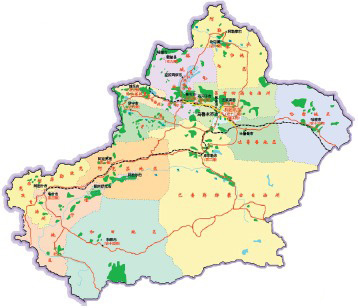
Xinjiang is situated in the hinterland of Eurasia, bordering 8 countries from northeast to southwest, namely, Mongolia, Russia, Kazakhstan, Kyrgyzstan, Tajikistan, Afghanistan, Pakistan and India, with a border line of 5,600 kilometers. It is a region with the longest border line and the largest number of ports opening to the outside world in China. Once an important channel along the ancient Silk Road, it is now the second bridgehead of "Eurasian continental railway".
(ii) Climate
Xinjiang has a temperate continental climate, with long and severely cold winter, short and burning hot summer, greatly variable spring and autumn. Annual average temperature in South Xinjiang is 10 ºC, that in Junggar Basin, North Xinjiang, 5.0-7.5 ºC, that in Altay and Tacheng 2.5-5.0 ºC. Xinjiang is an arid area, within sufficient and uneven distributed precipitation of 150-200 millimeters in North Xinjiang and less than 100 millimeters in South Xinjiang.
In winter, it is often snowy in Xinjiang. In the plains in North Xinjiang, there is always snow with a depth of 20-30 centimeters, maximum 80 centimeters; about 10 centimeters in South Xinjiang. In South Xinjiang, the frost-free period is 180-220 days, that in North Xinjiang is 140-185 days.
(iii) Population and Nationalities
At the end of 2005, XPCC had a total population of 2.5698 million, including an urban population of 673,400, farm population in farming and animal husbandry regiment of 1.8964 million, respectively covering 26.2% and 73.8% of the total population.
XPCC is a place where 38 nationalities gather, including Han, Uygur, Kazak, Hui, Mongolian, Sibo, Tadjik, Russian, Uzbek, Tatar and Manchu. At the end of 2005, XPCC Han population was 2.2573 million, that of Uygur 178,700, that of Kazak 43,100, that of Hui 65,200, that of Mongolian 6,500, that of other nationalities 18,900.
(iv) Infrastructure and Transportation
Aviation
Xinjiang has now 12 civil airports, 127 airlines including 82 domestic airlines and 45 international airlines, with an air route in use of 119,500 kilometers, forming an airline network structure with Urumqi Airport as regional hub and becoming international gateway in the western part of China. Xinjiang General Aviation Company under the jurisdiction of XPCC has 35 airplanes, mainly used in agricultural production, resisting against natural calamities and rushing to deal with emergencies.
Railways
North Xinjiang Railway, South Xinjiang Railway and Lanzhou-Xinjiang Railway pass through the entire area. With a business mileage of 2,925 kilometers, Xinjiang has greatly improved its railway transportation ability.
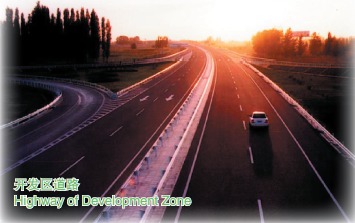
Highways
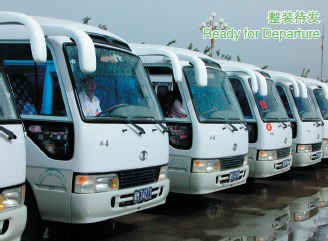
With a traffic mileage of 89,500 kilometers (including 31,700 kilometers under jurisdiction of XPCC), Xinjiang has formed a highway traffic transportation network consisting of Turpan-Urumgi-Dahuang High-grade Highway and Urumqi-Kuytun Expressway with Urumqi as center. 7 national highways function as primary skeleton, linking Gansu and Qinghai provinces in the east, various countries in Central Asia and West Asia in the west, Tibet in the south, and 68 provincial highways, which link prefectures and cities, counties (regiment farms) and townships (companies).
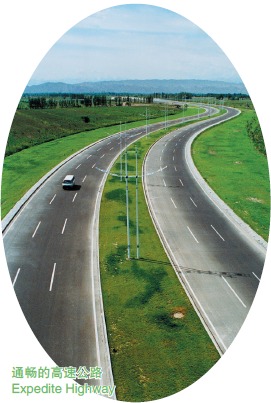
various kinds including 62,689 civil vehicles, 27,770 transport business vehicles, 41,665 employees engaged in transportation completed 76 graded passenger stations, 1 graded freight terminal and 4 logistic centers, with XPCC North Urumqi Logistic Center as an important part of Urumqi highway hub. There are 29 independent accounting transportation enterprises including 3 with foreign transportation management qualification. Xinjiang Passenger Transportation Group Company includes 12 passenger transportation enterprises, with class 2 qualification of national passenger transportation enterprise.
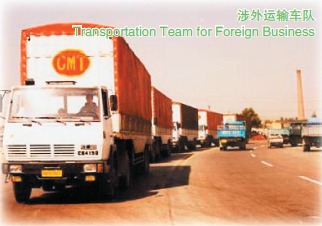
Telecommunication and Internet
Xinjiang has rapidly developed data communication network and multi-media network, completed ATM broadband networks covering various prefectures, divisions and cities, carried out construction of IP broadband network and metropolitan area network, initially formed an integrated modernized communication system consisting of stored program controlled switching, optical fiber communication, digital microwave, satellite communication and mobile communication. At the end of 2005, the entire region had 6.122 million fixed telephone users, 5.313 million mobile telephone users and 1.0578 million Internet users.
Finance
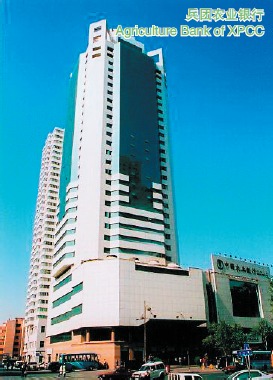
Xinjiang has had steady operation of finance. In 2005, it had a deposit balance of 35.817 billion Yuan, including enterprise deposit of 7.725 billion Yuan, residents' saving deposit of 18.014 billion Yuan.
Agriculture Bank of China XPCC Branch network is mainly distributed in cities such as Urumqi, Shihezi, Korla, Aksu, Kashi, Yining and Wujiaqu, and XPCC divisions and their farming and animal husbandry regiment farms. This branch administers 1 business office, 2 secondary branches, 7 directly affiliated sub-branches, 24 county-level sub-branches and 264 basic business networks.
Insurance
Xinjiang has steadily expanded its insurance market. It now has 1,313 insurance organs at various levels, including 37 subsidiary companies with their business spreading in 25 provinces, municipalities and autonomous regions. In 2005, the insurance business realized an income of 10.542 billion Yuan.
(v) International Fairs
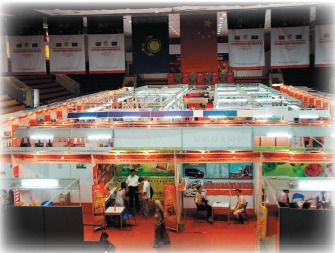
Since 2002, XPCC Bureau of Commerce and Mechanical and Electrical Department of the Ministry of Commerce of People's Republic of China jointly held China Mechanical and Electrical Products Exposition and China Commodity Trade Fair and Asia Commodity Trade Fair in Kazakhstan in succession. Asia Commodity Trade Fair is the largest fair for trade and investment in various countries in Central Asia and West Asia. Successful fairs have much influence in Central Asia, and have become an important platform for enterprises of China and Kazakhstan as well as peripheral Central Asian countries to carry out economic and trade cooperation and exchanges.
(vi) Higher Education and Scientific Research
In 2005, XPCC had 3 regular higher educational institutions, including 2 undergraduate universities and 1 college, 1 polytechnic, 1 independent school run by a regular university, 4 doctorate stations, 58 mastership stations. It has now 29,000 enrolled undergraduate students, 13,000 current PhD/MS students, 2,341 full-time regular university teachers.
School Survey


XPCC Scientific Research
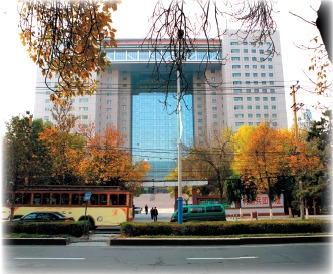
By 2005, XPCC had had 126,400 technical personals of various professions, 5,383 personnel engaged in scientific and technological activities. XPCC and its divisions have 17 independent scientific research institutions, 15 technology development organizations of large and medium-sized industrial enterprises. XPCC has formed a contingent of scientists with strong research, development, application and promotion abilities.
At present, XPCC has 7 key labs jointly established by province and ministry, 6 post-doctorate workstations, 2 state recognized technology centers of enterprise, 1 state-level agricultural scientific and technological garden, 3 XPCC level agricultural scientific and technological gardens, 12 experiment and demonstration centers of various kinds.
Since 1978, XPCC has obtained 1,317 state-level, province and ministry level (including XPCC level) scientific and technological rewards (items/times), including 5 achievements, including "China Merino (Xinjiang Corps Cultivation type ) breeding system", "Polyethylene mulching film and mulching planting technology", "Development, making and promotion of mulching film cotton planting machinery", obtaining first Prize of National Science & Technology Advance (see attached table). In 2005, contribution ratio of advance of science and technology to XPCC agriculture reached 51%.
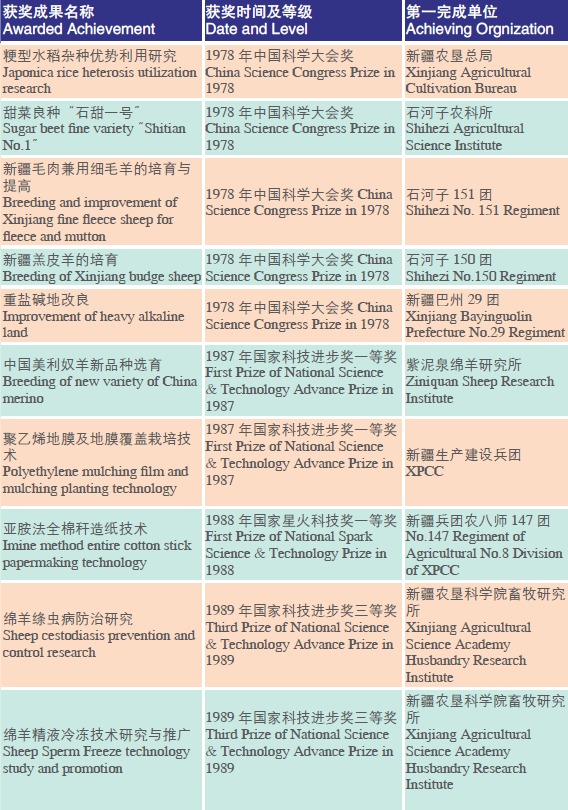
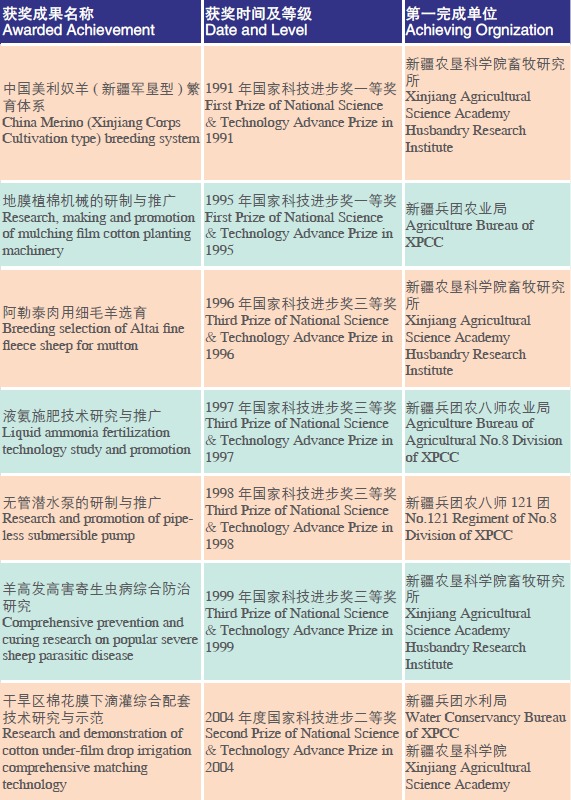
(vii) Tourism
Xinjiang is rich in natural and artificial tourist resources. According to resource classification of "Criterion of General Investigation of Tourism Resources in China", Xinjiang has 56 of China's 68 kinds of tourist resources, ranking first in China. Xinjiang has unusual natural landscapes, with icy peaks and fire land coexistence, desert and oasis neighboring, rough natural views, unique landscape combination. The ancient Silk Road scenic spots and historic resorts, colorful ethical elegance and cultural arts attract numerous domestic and international tourists.
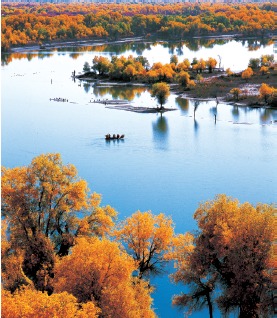
At the Central Entertainment Square of Shihezi Cith of Xinjiang, there is a series of sculptures, named No.1 Plough of XPCC. Dating back to 1950's, the first generation of XPCC, answering the call of CPC, decided to settle in Xinjiang, station troops to guard the frontier and cultivate the frontier areas, successfully turning the wilds into fertile land. In order to remember this history, the
No.1 Plough of XPCC Sculptures series were established, which now becomes a renowned tourism site together with Sculpture of General Wangzhen and Sculpture of New Rhythm of Frontier Life.
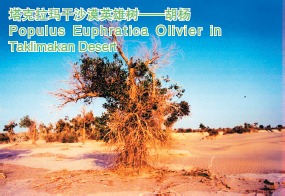
North Lake Park
North Lake, 18 km away in the north of the Shihezi, is a bright pearl on Manasi River, which combines functions of tourism destination, aquatic breeding and irrigation as well. North Lake is located at the spring spill belt of alluvial fan of Tianshan's north foot with ravine crisscrossing and the mouths of springs clustering around. Therefore, it was formerly called" Great Spring ravine".
The current North Lake covers a wide water area of 11 km2 with blue waves rippling and boats dotting on the surface of the lake. Sweethearts walk along the causeway with weeping willow on the lakefront. The North Lake lives dozens of waterfowls such as swan and wide goose, as well as different kinds of fishes, shrimps and mussels. The North Lake, also known as "south of the Changjiang River in the desert" occupies an area of 21 km2 with more than 20 scenic spots such as rockwork, Lansheng pavilion and Xiaoyao pavilion.
Related Articles:
Doing Business in XPCC of China: Economy
Doing Business in XPCC of China: Investment
Doing Business in XPCC of China: Development Zones





